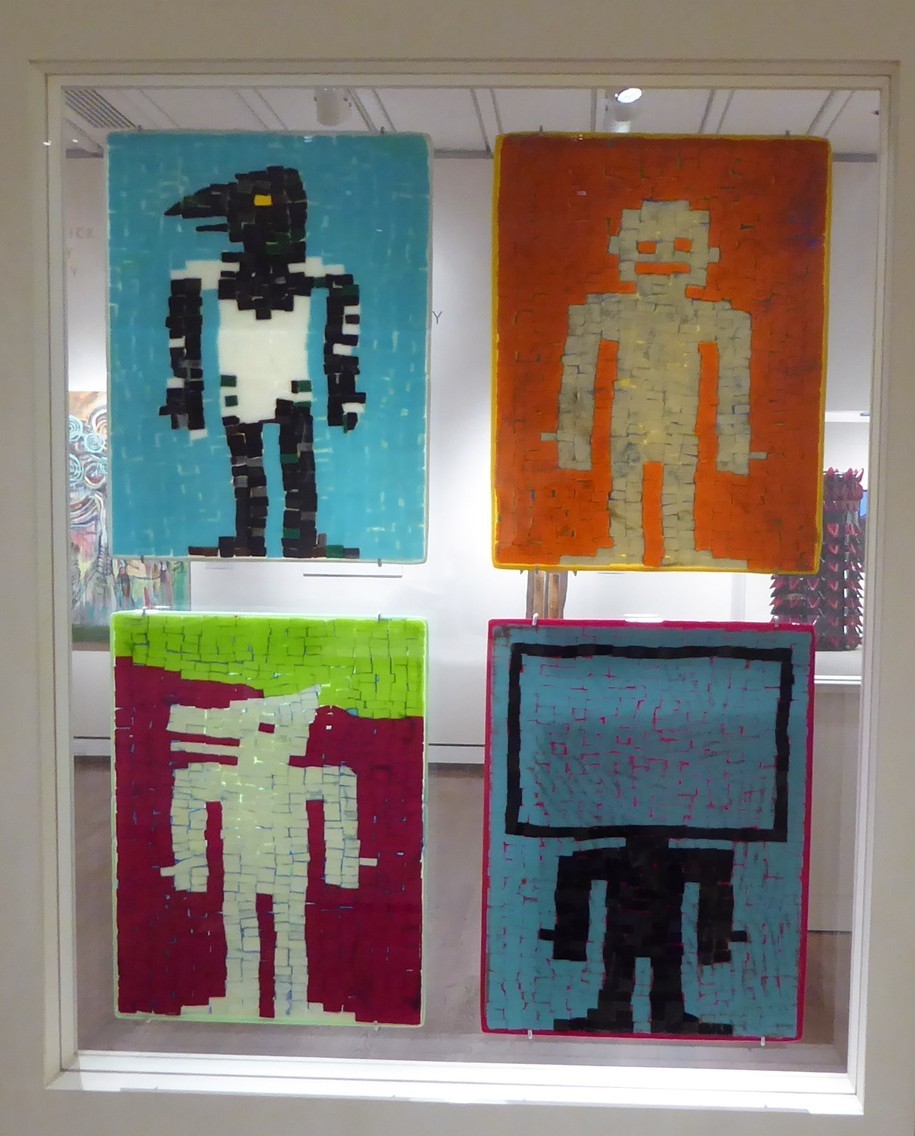
In museums, textbooks, the popular media, and college classrooms, American Indians are often kept in the ghetto of the past. Displays of American Indian art often focus on the past both in terms of when the art was made and the images shown. Indian people did not disappear nor did they stop producing art at the beginning of the twentieth century. In the twenty-first century, American Indian artists have continued to produce creative works.
In his book Native Arts of North America, Christian Feest writes:
“Indian mainstream art is produced by artists who happen to be Indians.”
He goes on to write:
“While the subject matter of their art is sometimes related to their ancestry or ethnic classification, their style is not.”
The Portland Art Museum recently had an exhibit featuring contemporary American Indian artists.
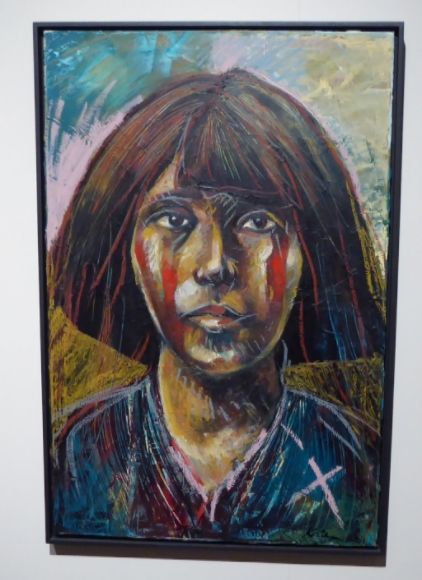 Shown above: After Boarding School: In Mourning (2011) by Kaila Farrell-Smith (Klamath/Modoc).
Shown above: After Boarding School: In Mourning (2011) by Kaila Farrell-Smith (Klamath/Modoc). 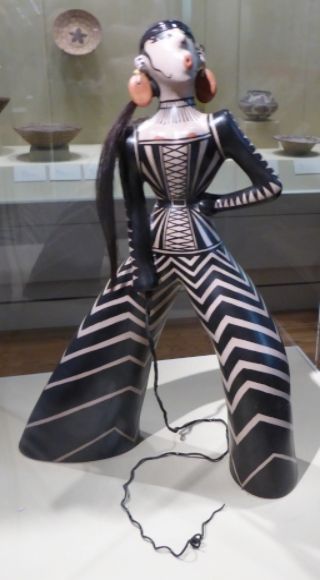 The clay figure shown above was made by Virgil Ortiz (Cochiti Pueblo) in 2009. The black color is from wild spinach.
The clay figure shown above was made by Virgil Ortiz (Cochiti Pueblo) in 2009. The black color is from wild spinach. 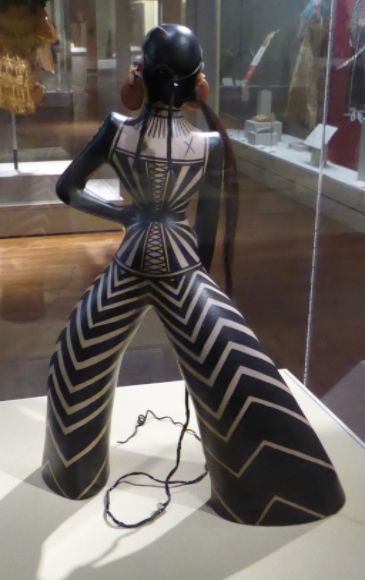 Shown above is another view of Virgil Ortiz’s clay figure.
Shown above is another view of Virgil Ortiz’s clay figure. 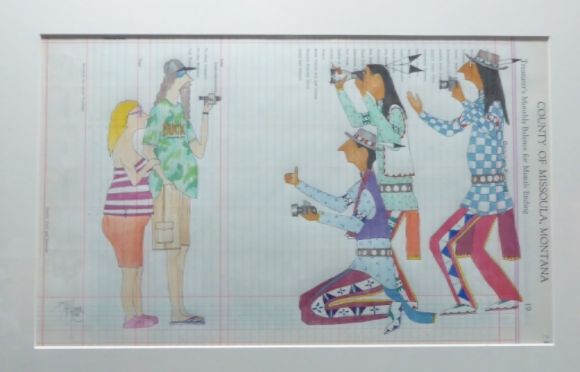 “WOW, Real White People” is the title of this ledger art by Dwayne Wilcox (Oglala and Lakota). This was done in 2014.
“WOW, Real White People” is the title of this ledger art by Dwayne Wilcox (Oglala and Lakota). This was done in 2014.  “Four Skins” is the title of this ledger art by Dwayne Wilcox (Oglala and Lakota). This was done in 2014.
“Four Skins” is the title of this ledger art by Dwayne Wilcox (Oglala and Lakota). This was done in 2014.  Shown above “The High Status of Salamander” made in 2014 by Greg A. Robinson (Chinook). This is made from yellow and red cedar.
Shown above “The High Status of Salamander” made in 2014 by Greg A. Robinson (Chinook). This is made from yellow and red cedar. 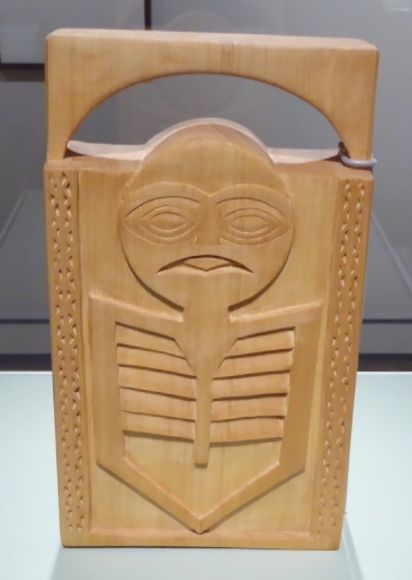 Shown above is a Chinook rattle made in 2015 by Greg Archuleta (Santiam Kalapuya/Chinook).
Shown above is a Chinook rattle made in 2015 by Greg Archuleta (Santiam Kalapuya/Chinook). 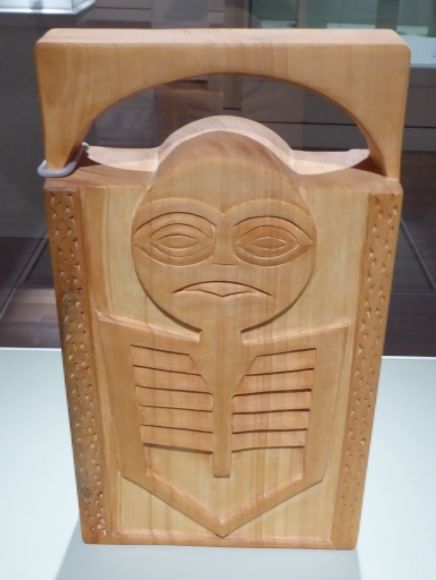 Shown above is another view of the Chinook rattle.
Shown above is another view of the Chinook rattle.  The work shown above is by Gail Tremblay (Onondaga and Mi’kmaq). This 2009 work is entitled Since High School My Most Wanted Has been to See Roles for Red Leaders Among all the Images of Blacks and Whites on the Silver Screen.
The work shown above is by Gail Tremblay (Onondaga and Mi’kmaq). This 2009 work is entitled Since High School My Most Wanted Has been to See Roles for Red Leaders Among all the Images of Blacks and Whites on the Silver Screen.
Lillian Pitt
Lillian Pitt
According to the display:
“Lillian Pitt (born 1944, Warm Springs, Wasco, and Yakama) was born on the Warm Springs reservation and move to Portland in the early 1960s after graduating from Madras High School. In the 1970s she began taking art classes at Mt. Hood Community College and took up ceramics, initially making masks. In the decades since, Pitt has become known for an iconography rooted in the Columbia River petroglyphs of her ancestors, working in a variety of media, including bronze, glass, and wearable art.”
She finds inspiration in ancient rock art—petroglyphs and pictographs. She has brought the indigenous iconography of Columbia River rock art to the public and reanimated it.
 Shown above is Wasco Totem made by Lillian Pitt in 1996.
Shown above is Wasco Totem made by Lillian Pitt in 1996. 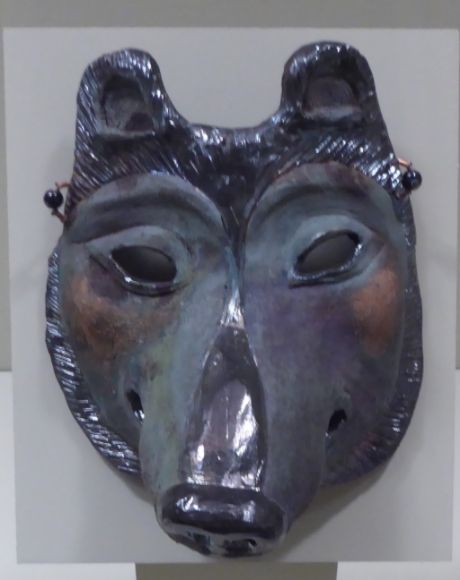 Shown above is Coyote made by Lillian Pitt in 2005.
Shown above is Coyote made by Lillian Pitt in 2005. 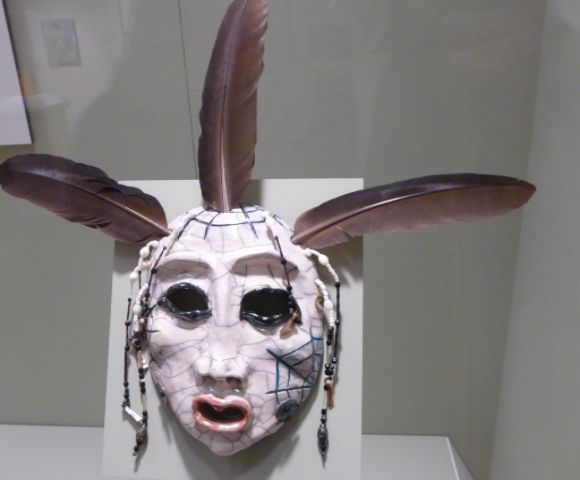 Shown above is Pitt’s Spiderwoman Mask.
Shown above is Pitt’s Spiderwoman Mask. 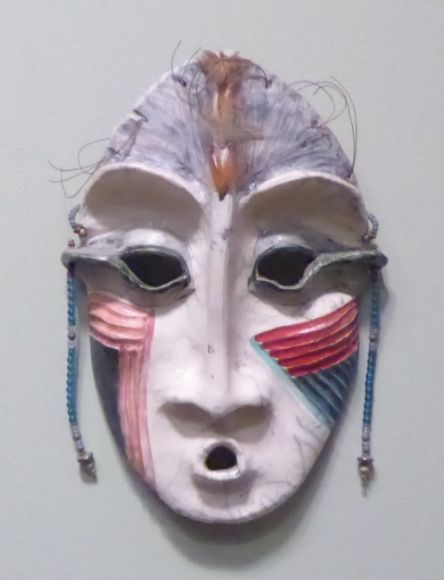 Shown above is Coos Stick Indian made by Lillian Pitt in 1991.
Shown above is Coos Stick Indian made by Lillian Pitt in 1991.
 Shown above is Little Opossum Girl made by Lillian Pitt in 1990.
Shown above is Little Opossum Girl made by Lillian Pitt in 1990.
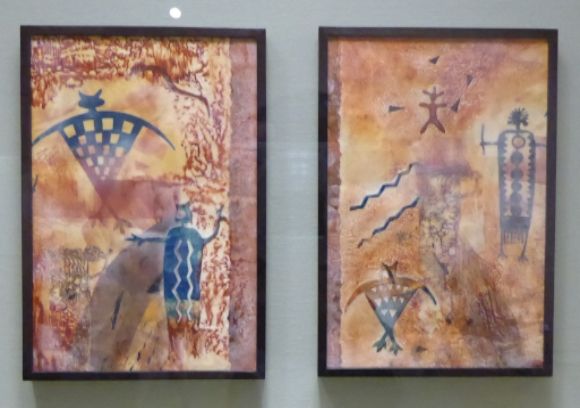 Shown above is Visitors made by Lillian Pitt in 2014.
Shown above is Visitors made by Lillian Pitt in 2014. 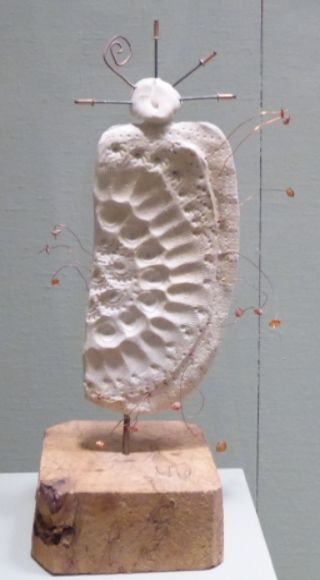 Shown above is Dancing in the Wind made by Lillian Pitt in 1998.
Shown above is Dancing in the Wind made by Lillian Pitt in 1998. 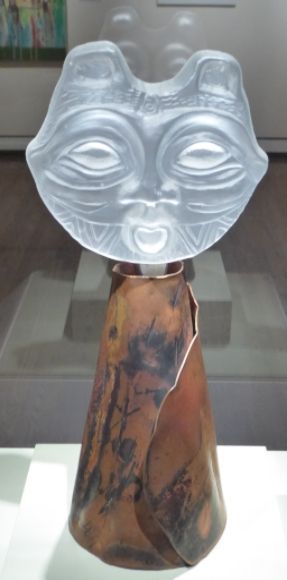 Shown above is She Who Watches made by Lillian Pitt in 2009.
Shown above is She Who Watches made by Lillian Pitt in 2009.


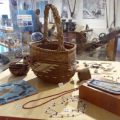
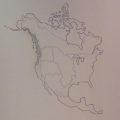
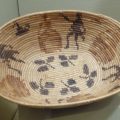

Leave a Reply